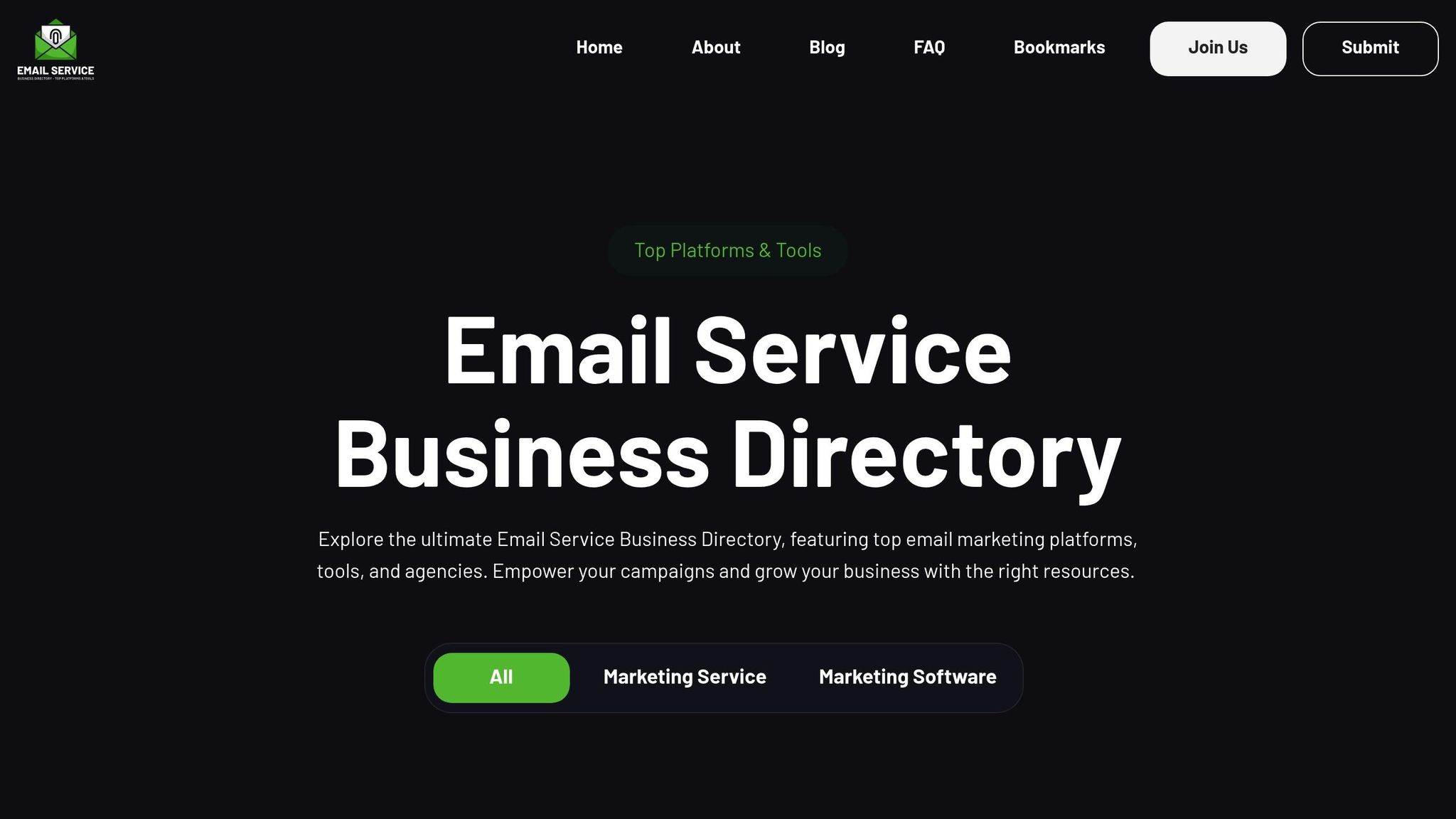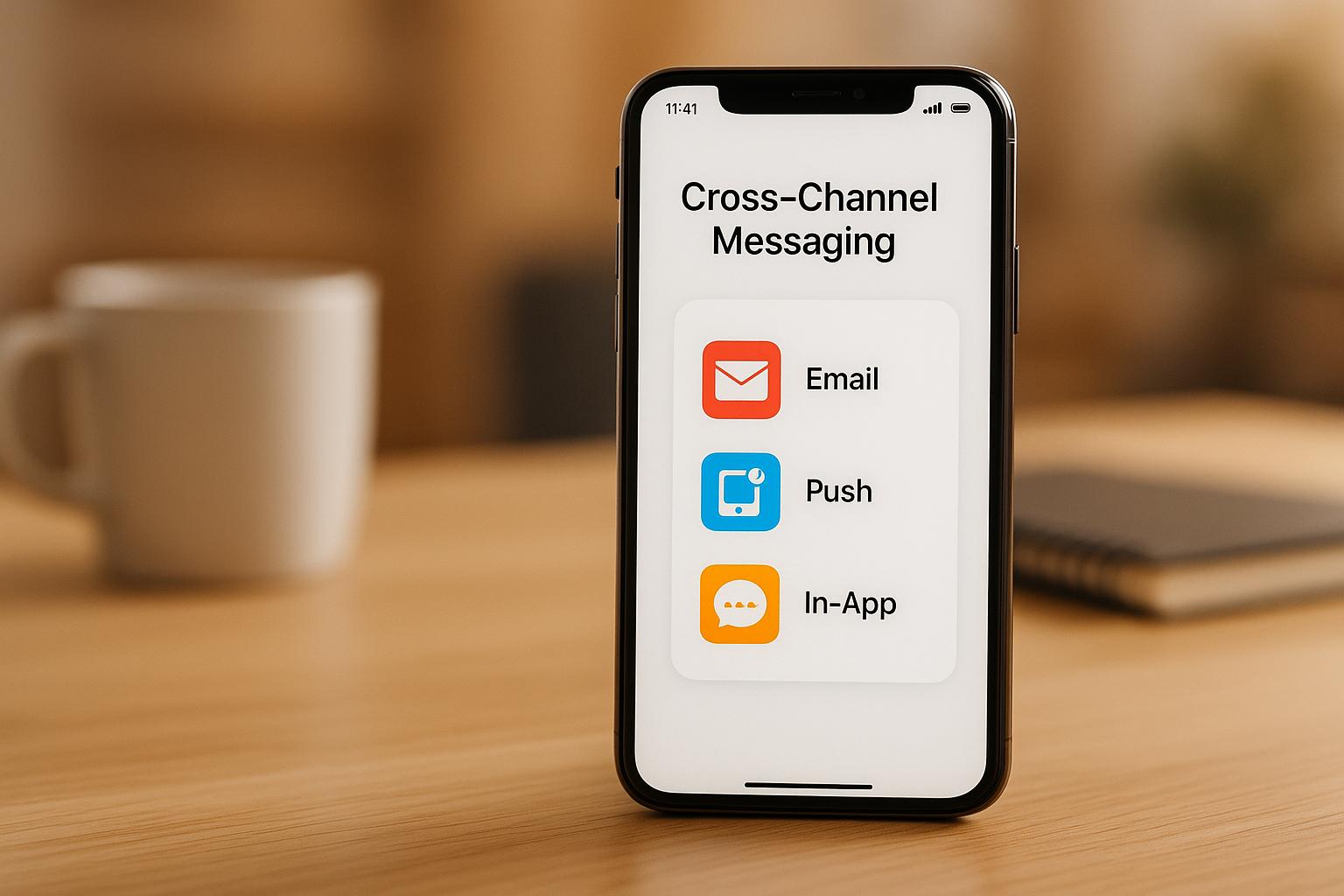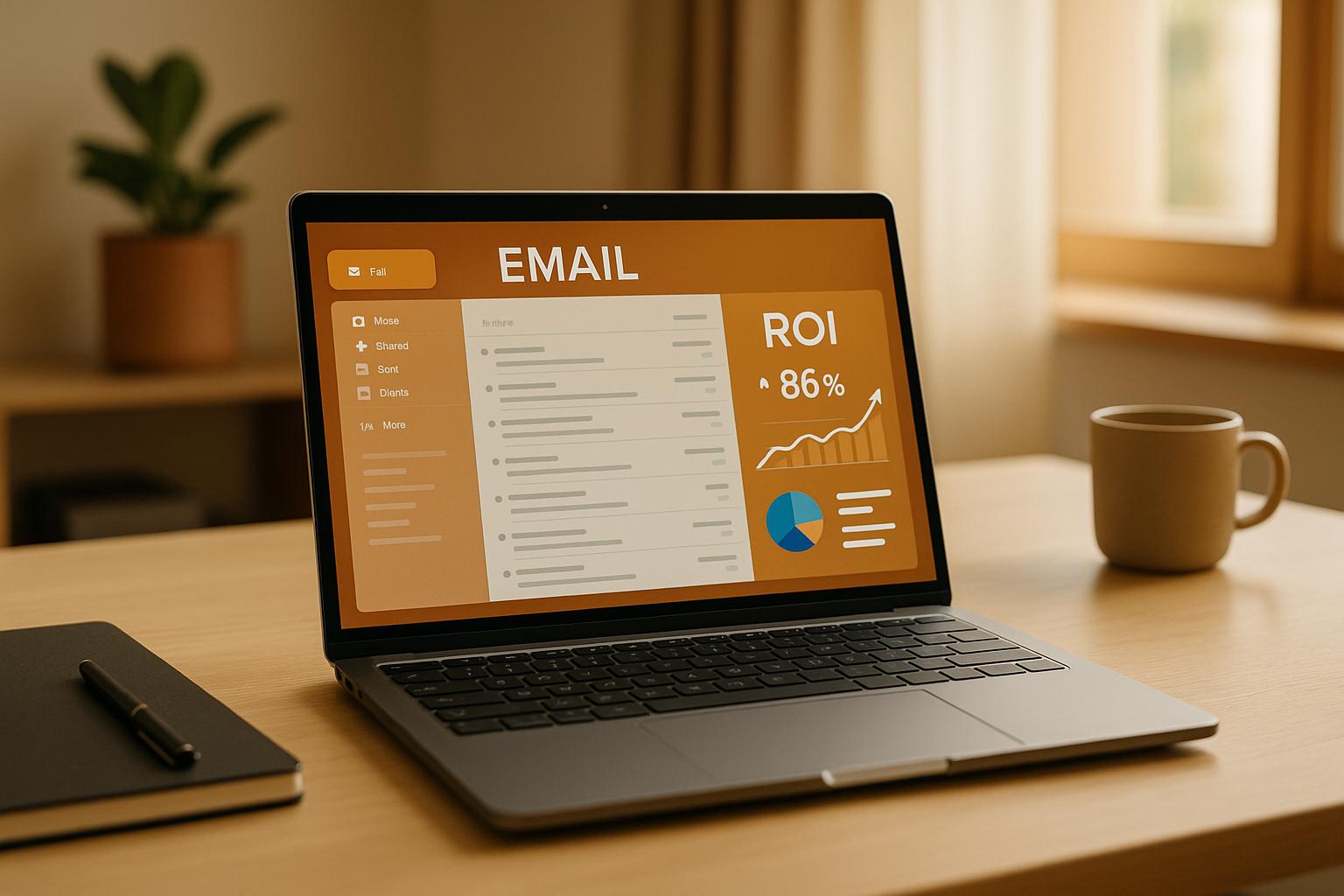Geographic segmentation tailors email campaigns to subscribers’ locations, increasing relevance and engagement. Here’s how it works and why it matters:
- What It Is: Grouping subscribers by location (e.g., country, region, ZIP code) to create location-specific campaigns.
- Why It’s Effective:
- Sends emails at the best times for local time zones.
- Aligns content with regional events, weather, and cultural preferences.
- Improves open rates, click-through rates, and conversions.
- Key Tools:
- IP-based geolocation, shipping addresses, and sign-up form data.
- Email platforms with dynamic content and time zone scheduling.
- How to Start:
- Collect accurate location data through sign-ups, purchases, and website visits.
- Create location-based groups (e.g., regions, cities, or climate zones).
- Customize content for each region, including local language, events, and offers.
How to Segment Your Email Subscribers Based on Location ...
Geographic Segmentation Basics
Geographic segmentation helps you customize campaigns based on where your subscribers are, making your content more relevant and improving engagement.
What Is Geographic Segmentation?
This approach organizes email subscribers into groups based on their location, ranging from broad areas like countries to specific ZIP codes. Some common ways to target include:
- Countries for global campaigns
- Regions with shared traits
- Urban areas for city-specific messaging
- ZIP or postal codes for highly localized outreach
Why Use It?
Targeting by location offers several clear benefits:
- Better timing: Schedule emails to match local time zones, so messages land when people are most likely to open them.
- Relevant content: Align messages with local customs, events, or interests to make them more engaging.
Types of Location Data
To make the most of geographic segmentation, you’ll rely on two main types of data:
-
Primary Location Data
This is information directly shared by users, such as:- Sign-up form details
- Account profiles
- Shipping addresses
- Newsletter preferences
-
Secondary Location Indicators
Data collected indirectly, like:- IP address-based geolocation
- GPS from mobile devices
- Website visitor locations
- Purchase history
With accurate location data, you can tackle email marketing challenges more effectively. Up next, we’ll look at how geographic segmentation can solve specific issues.
Email Marketing Problems Solved
Geographic segmentation can transform lackluster email campaigns into highly effective ones by addressing their core weaknesses.
Improving Email Open Rates
Timing and relevance are critical for email success, and geographic segmentation boosts both. Jason Warnock, Vice President of Market Intelligence and Deliverability at Yesmail Interactive, explains:
"Real-time email marketing campaigns based on consumers' current locations and major geographic events have 2.5 times more open rates and double the amount of unique clicks than traditional email campaigns."
This improvement comes down to two main factors:
- Time zone optimization: Sending emails at the right time for each recipient's location increases engagement.
- Location-specific triggers: Aligning messages with local events or activities makes them more relevant.
Higher open rates create the opportunity to deliver content that truly connects with your audience.
Making Content More Relevant
Geographic targeting strengthens subscriber relationships by tailoring content to their specific needs and interests. This includes:
- Customizing offers to fit regional preferences
- Referencing local events to build relevance
- Addressing area-specific weather with timely solutions
- Showcasing community involvement to foster trust
For example, promoting discounts during a local marathon can generate immediate interest and engagement.
This level of precision helps your emails stand out compared to generic campaigns.
Moving Past Generic Emails
One-size-fits-all email campaigns often fall flat because they fail to account for regional differences. Geographic segmentation adds a personal touch by incorporating local culture, language, and seasonal trends into your messaging.
Here’s how location-based triggers can elevate your campaigns:
| Trigger Type | Example Application | Benefit |
|---|---|---|
| Sports Events | Post-game promotions for local team victories | Relevant |
| Weather Patterns | Rain gear promotions during storm forecasts | Timely |
| Cultural Events | Special offers tied to festivals or celebrations | Engaging |
| Local Charity | Highlighting participation in community fundraisers | Trustworthy |
Setting Up Geographic Segments
When it comes to geographic segmentation, having a clear plan for collecting and using location data is crucial.
Getting Location Data
Here are some effective ways to gather location details:
- Sign-up forms: Add fields for ZIP codes, cities, or states.
- IP-based detection: Automatically capture location data from website visitors.
- Purchase history: Use shipping addresses from previous orders.
- Progressive profiling: Gradually request more location details over time.
Using multiple methods together helps ensure the accuracy of your subscriber information.
Building Location Groups
Once you’ve verified the data, you can create meaningful location-based groups.
| Segment Type | Example Groups | Business Application |
|---|---|---|
| Regional | Northeast, Midwest, South, West | Seasonal offers and promotions |
| Population Density | Urban, Suburban, Rural | Service availability |
| Climate Zones | Tropical, Temperate, Arctic | Weather-specific campaigns |
| Market Size | Primary, Secondary, Tertiary | Allocating resources effectively |
Starting with broad groups and fine-tuning them based on performance data can help improve your targeting.
Adjusting Content by Region
Customizing content for different regions can make your campaigns more effective. Here’s how:
- Local language: Use terms and phrases that resonate with the region.
- Cultural references: Incorporate local events or traditions.
- Pricing: Display prices in the local currency.
- Product selection: Highlight products that are available or popular in specific areas.
- Imagery: Use visuals that reflect the region’s environment or lifestyle.
Time Zone Email Scheduling
Once the content is tailored, ensure emails are sent at the right times for each region:
- Set sending windows: Identify the best times for each area, typically mid-morning (e.g., 9–11 AM local time).
- Automate schedules: Use automation tools to send emails based on each recipient’s time zone.
- Account for local factors: Adjust schedules to consider holidays or regional routines.
- Track performance: Watch open rates by time zone and tweak your timing as needed.
sbb-itb-6e7333f
Tracking Results and ROI
Key Metrics to Monitor
Here are some essential metrics to keep an eye on:
| Metric | What It Tells You |
|---|---|
| Open Rate by Region | The percentage of email recipients in a specific region who open your emails. |
| Regional CTR | The click-through rate for users within each geographic area. |
| Conversion Rate | How often recipients in a region complete the desired action, like making a purchase or signing up. |
| Unsubscribe Rate | The percentage of recipients in a region who choose to stop receiving your emails. |
These metrics provide insights into how your campaigns are performing across different regions.
Analyzing Regional Performance
Start by documenting baseline engagement rates for each region. Pay attention to seasonal trends that might influence these numbers. By comparing the performance of segmented campaigns across regions, you can uncover what works best and where adjustments are needed.
Measuring ROI
Once you’ve gathered regional data, it’s time to evaluate the financial impact of your efforts.
-
Calculate Total Investment
Include all costs, such as segmentation tools on your email platform, creating region-specific content, and the time spent analyzing data. -
Track Revenue by Region
Record the revenue generated from email campaigns in each geographic area. -
Determine ROI
Use this formula:
ROI = (Revenue from segmented campaigns - Investment) / Investment × 100
This process helps you identify which regions deliver the highest returns and refine your strategy accordingly.
Tips for Better Results
Testing Regional Emails
Run A/B tests on specific email components, such as subject lines, design, offers, or send times, to figure out what works best in each region. Test one element at a time to get clear insights. For instance, you could compare subject lines with local references against more generic ones, experiment with different design layouts, or try location-specific offers.
Use your email platform's analytics to track performance and document which variations yield the best results in different regions. Use this data to fine-tune your messaging and make it more relevant to local audiences.
Local Culture Considerations
Being mindful of cultural differences is crucial. Pay attention to:
| Cultural Element | How to Adapt |
|---|---|
| Language Preferences | Use region-specific language |
| Local Holidays | Schedule campaigns around celebrations |
| Color Symbolism | Pick colors that align with local meaning |
| Shopping Habits | Match offers to local buying trends |
| Time Conventions | Format dates and times locally |
Cultural differences go beyond language. Think about local customs, values, and expectations. For example, a casual tone that works in one region might be seen as too informal elsewhere.
When tailoring your content:
- Research regional holidays and key events
- Learn about local shopping habits and preferences
- Be aware of cultural sensitivities and avoid taboos
- Get input from local team members or partners when possible
- Use regional engagement metrics to measure success
The goal is to build genuine connections by understanding the local context and adjusting your message to fit.
Segmentation Tools
To effectively apply geographic segmentation, you need the right tools that can handle location data efficiently. Here’s a breakdown of what to consider when choosing these tools.
Email Service Business Directory

The Email Service Business Directory is a resource designed to help businesses find email marketing platforms with geographic segmentation capabilities. Its listings make it easier to compare tools based on specific needs and budgets.
Here’s what to focus on when using the directory to select geographic segmentation tools:
| Feature Category | Key Capabilities to Consider |
|---|---|
| Data Collection | IP-based location tracking, custom location fields, CRM integration |
| Segmentation Options | Filtering by city, state, or country; time zone grouping; regional targeting |
| Content Customization | Dynamic content blocks, local language options, regional offer management |
| Analytics | Tracking performance and ROI by region |
When evaluating tools, look for features that make the process seamless and efficient. Some essential capabilities include:
- Real-time location detection to automatically identify subscriber locations
- Custom field mapping to organize and manage location data
- Dynamic content adjustments tailored to subscriber locations
- Automated time zone scheduling for optimal email delivery times
- Multi-language support to cater to diverse audiences
The directory’s filtering system simplifies the search for platforms with these advanced features, ensuring you find tools that align with your goals and integrate smoothly with your existing systems.
Conclusion
Geographic segmentation helps boost email marketing ROI by creating personalized, location-focused campaigns. Done right, it turns generic email efforts into region-specific messaging that increases engagement and revenue.
Start by gathering accurate location data through methods like IP tracking or user-provided information. Then, create location-based groups that align with your business goals, whether you're focusing on cities, states, or countries. To succeed, it's crucial to understand regional preferences, cultural details, and the best times to engage your audience.
Timing matters. Scheduling emails based on time zones ensures your messages land when subscribers are most likely to interact. Pair this with locally relevant content to create emails that truly resonate.
For even better results, combine geographic data with other insights like demographics and purchase history. This approach leads to higher open rates, more clicks, and stronger conversions. Track performance by monitoring regional metrics and testing different strategies to fine-tune your approach. When supported by the right tools and a data-driven mindset, geographic segmentation helps build stronger audience connections and delivers measurable results across all regions.


